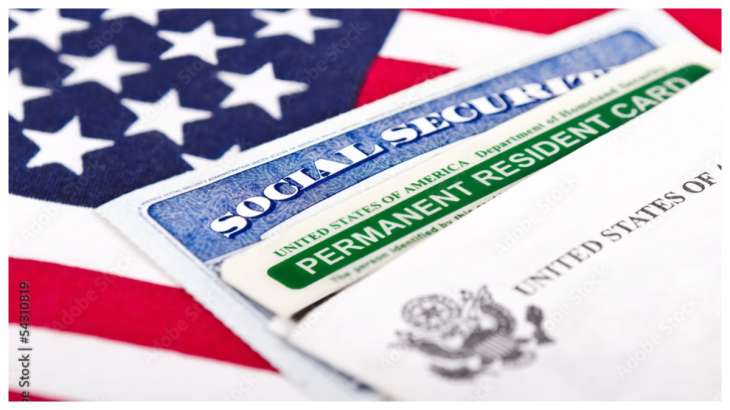
Green Card Waiting Time for India: A senior official said the long wait for green cards for people from India, China and Mexico and the Philippines is mainly due to the country-based quota system. The official further said that only the US Congress can change its allocation.
Specifically, a green card is a permanent resident card issued to immigrants in the US as proof that the bearer has been granted the privilege of living permanently in the country. Each country has limits on the issuance of green cards to individuals. US immigration law provides for the issuance of approximately 140,000 employment-based green cards each year, of which only seven percent go to individuals from a single country.
Employment based green card limit is 1,40,000
Douglas Rand, senior advisor to the director of the United States Citizenship and Immigration Services (USCIS), said an annual limit on family-sponsored preference green cards has been established by the US Congress. He said that the family-sponsored preference green card limit for the whole world is 2,26,000 while the employment-based green card annual limit is 1,40,000. In addition, there is also a per-country limit which is set at seven per cent of the total annual family-sponsored and employment-based preference limit, he said.
“That means 25,620,” Rand said in response to a question during a virtual town hall hosted by the State Department on visas. I have to face such a long waiting period.” and consular issues.
Demand for more than 25,620 green cards
“There are more than 25,620 green cards in demand each year, both family and employment-based. Unfortunately, only Congress can change these annual limits. Card numbers are available, we make sure they are used every year Rand said.
The wait for green cards has now lasted more than ten years for hundreds of thousands of Indian professionals, and visa wait times often go back several years. “Suffice it to say for now it’s about supply and demand. Congress has constrained supply. Demand continues to increase. Not only from India, but around the world. When a particular green card category or country If the demand within a category exceeds the supply of the number available then that category and country is considered oversubscribed,” he said.
To ensure that visa use remains within these annual limits as well as category and per-country limits, the State Department applies cut-off dates in the Visa Bulletin. The order of thought is established by Congress.
‘Visas not available to all non-citizens due to high demand’
“Regression means that because of high demand for visas in excess of the statutory limit, visas are not available to all non-citizens who seek them, regardless of whether they filed an application for adjustment of status or otherwise for permanent residence.” Yes,” he said. ,
RAND stressed US plans to continue improving the accuracy and comprehensiveness of its data on employment-based adjustment of status applications. “Our goal is to resume publishing regular inventory reports,” he said.
He said that even when there is a regression, there are permanent gains. “So, someone who had the opportunity to file for adjustment of status but who then sees their cutoff date retrograde, they are still able to get some benefits. They can apply for employment authorization that are not tied to any particular employer. They can apply for advanced parole to authorize travel outside the United States,” the official said.
“Once an adjustment of status application is pending for 180 days or more, they may port the underlying job opportunity to a new employer. Depending on the facts of the case, children who also applied for adjustment of status may applied, their age cannot expire. That person is generally considered to be in a period of authorized stay while the application is pending,” Rand said.
2,000 individual H-1B applicants receive green cards each year
The number of employment-based green cards issued to people from India is around 7,000-8,000 per year, as the seven per cent country cap is the limit. This 7,000-8,000 includes dependents of primary applicants, so about 2,000 individual H-1B applicants receive green cards for people from India each year.
Every year 85,000 H-1B work visas are issued and about 60 percent of these are issued to technical workers in India through a fair lottery system, which equates to about 51,000-60,000 H-1B visas.
The H1B visa is a non-immigrant visa that allows US companies to employ foreign workers in specialty occupations that require theoretical or technical expertise. Technology companies depend on it to hire thousands of employees every year from countries like India and China.
(With PTI inputs)
Read also: Good news! Reduced wait times for US visitor visa interviews. Description
Read also: H-1B visa limit reached, successful applicants informed: US Immigration Services